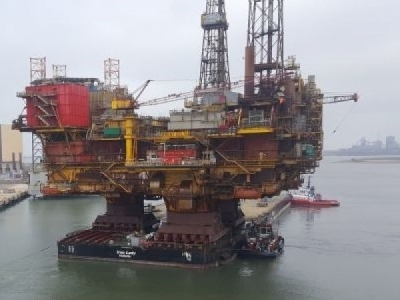
Posted on December 14, 2017
By David Foxwell, OSJ
Able Group in the UK has strengthened its position as an offshore decommissioning and recycling facility with a £6M (US$8M) investment at its Able Seaton Port facility on the River Tees.
A recently completed upgrade and dredging programme means it can offer enhanced facilities for a range of activities, including marine decommissioning, offshore wind installations and handling large-scale project cargo.
This latest phase of the investment at Able Seaton Port included extensive dredging work that, with a depth of -9.5 m CD, will provide 24-hour sea access for the majority of vessels.
Able’s executive chairman Peter Stephenson stressed that the company was committed to continued investment in facilities at Able Seaton Port to ensure that it remained at the forefront of the growing offshore decommissioning industry, as well as exploiting other developing sectors.
“We have always taken a longer-term view in respect of our investments and these latest works will assist us to continue and deliver an even wider range of projects on time and on budget,” said Mr Stephenson. “The group is committed to meeting new challenges and embracing new opportunities and the increased depths at Able Seaton Port will mean that we can now accommodate some of the largest vessels operating across a range of different business sectors.”
Able won the contract for the decommissioning the 24,000-tonne Brent Delta platform, which was moved to Able Seaton Port in May 2017.
Decommissioning work will be completed next year, after which the next two platform topsides from the Brent field are expected in 2019 and 2020.
“The very fact that we were successful in being awarded the contract from Shell for the largest ever single-lift load in on our newly constructed Quay 6 demonstrates the capabilities of the company in this growing market. There will be more to come and we are also confident of winning new work linked to the renewable energy sector.”
The dredging work provided an absolute minimum 9.5 m of water in the Seaton Channel and the Holding Basin. Given the tidal range of the River Tees this figure increases, depending on the tide cycle, to between 10.4 m and 15.0 m.
Quays 10 and 11 are currently dredged to similar levels and have the capacity to be increased to a minimum level of 15.0 m providing between 15.9 m and 20.5 m of water depth.
Source: osj





